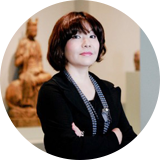SEA PROJECT Event2
Performance and Talk by Heri Dono
+ Report of the SEA PROJECT Research in Indonesia Part 2: Report of the SEA PROJECT Presentation 1
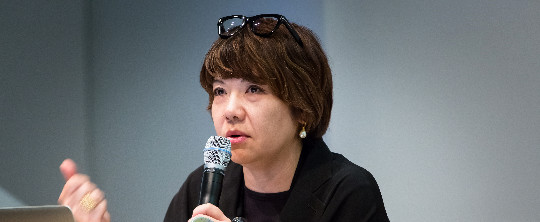
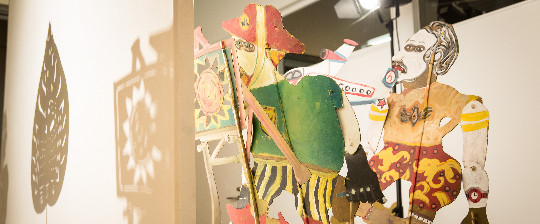
Indonesian Contemporary Art and International Exhibitions
For the SEA Project, I conducted research in ten Southeast Asian countries for about a year and a half beginning in 2015. What I thought was most difficult after starting this project was that the history, politics, and social conditions of the ten member countries of ASEAN all differ, and so I wondered how we are to share each of their contexts with the Japanese audience. Some works require our understanding of their contextual backdrop for us to fully appreciate them, so I think it is necessary to also reflect the dynamic political, economic, social, and cultural changes in the exhibition.
I will be talking about Indonesia, which occupies an enormous area in Southeast Asia. With a population of 260 million, it is the largest of the ten ASEAN countries. It has an area of 190 square kilometers, its official language is Bahasa Indonesian, and it is extremely diverse in terms of religion, with Islam, Christianity, Hindu, and Buddhism. What I find fascinating is that the average age in Indonesia is 27.8, while Japan’s is about 45. So I think one characteristic we can point to is that there are a lot of young people in Indonesia. Furthermore, its islands number more than thirteen thousand, there are about seven hundred forty different ethnic groups, and there are nearly six hundred languages besides the official one. So I want to stress the level of cultural diversity that pervades this single country; something that is hard for someone in Japan to imagine.
The main centers of art are Jakarta, Yogyakarta, Surabaya, and Bandung. Jakarta has a population of over ten million people, but its area is only one-third that of Tokyo, so just by making that comparison we can tell that the population density is incredibly high. Bandung and Surabaya are also large cities in their own right. Yogyakarta as a town is not as large, but in the art world, it is safe to say that it plays an enormous role as a hub for contemporary art. The city centers, like in Jakarta for instance, are resplendent towns lined with high-rise buildings just like Tokyo. While having this side, they also have an extremely long cultural history which can be seen in architectures such as the Prambanan Temple (nineth to tenth century) near Yogyakarta, and Borobudur, the world’s largest complex of Buddhist temple ruins (eighth century).
In terms of Japan’s relations with not only Indonesia but Southeast Asia, the fact is the Japanese army occupied many countries during the war from 1941 to 1945. However, it is difficult to say that this is common knowledge in Japan. While it has been called a peaceful nation for seventy years since the war ended in 1945, if we turn our eyes to Southeast Asia, it is impossible to understand its art without considering that during the [same] seventy years Southeast Asia had undergone a variety of political changes. I will give a simple introduction of those that are particularly noteworthy.
During its occupation in Indonesia, one of Japan’s policies was establishing cultural centers called Keimin bunka shidosho throughout Indonesia. Japanese artists, designers, musicians, and such were sent to these Keimin bunka shidosho to teach the locals about the diverse artistic genres and host exhibitions of works by the general public. This policy is considered an important part of history among the Indonesian contemporary art community, which is demonstrated by how these centers have retained their Japanese names and continue to be called “keimin bunka shidosho.”
After the Japanese army withdrew, Sukarno, the first President of Indonesia, declared the country’s independence. But the Dutch Empire only recognized it in 1949 at the time of the Hague Agreement. The 1955 Asian-African Conference known as the Bandung Conference was a meeting held primarily for countries that gained independence after World War II, such as India, Indonesia, the People’s Republic of China, and Egypt. These newly-independent countries that were not superpowers during the Cold War gathered to debate their respective positions and issued a joint declaration. Ten years later in 1965, tensions rose between the military party and the Indonesian Communist Party (PKI) which culminated in the September 30 Movement. The coup d’état itself failed, but as a result Sukarno ceded power to Suharto whose reign lasted for many years. Until the expansion of the democratization movement in 1998 and Suharto’s resignation, there was oppression against many forms of [artistic] expression under the military regime. Heri Dono, who performed today, was born in 1960 so he is of the generation who lived through this period of change. As such, it is important to understand how he embeds his own experiences into his practices and forms of expressions .
Looking at the art scene in Asia as a whole, a very large number of art museums have newly opened, biennales are held all over the place, and art fairs are also organized in a variety of locations. The SEA Project’s research on Indonesia’s art galleries first consisted of a visit to the National Gallery of Indonesia that opened in 1999 as a facility for visual culture. However in Indonesia, the momentum for private art museums is strong; one such example in Jakarta is the Akili Museum of Art that Rudy Akili opened in 2006 to display his personal collection. In addition, the Museum MACAN is scheduled to open next year in Jakarta. It will have a remarkable 3,800-square meters exhibition space, roughly equivalent to the Mori Art Museum and the National Art Center, Tokyo combined. I believe this will function as an extremely important art museum.
During our visit in November 2015, there were three international exhibitions being held in Indonesia. First, we have、the Jakarta Biennale, which initially began in 1974 as Indonesia’s domestic painting exhibition but underwent transformations to become a biennale that now garners attention worldwide. The Development of a managing parent organization is also underway, with a Biennale Foundation now in place, for example. When we visited the opening, there were about five thousand young people who had gathered. The Biennale itself was held in a warehouse , so there was hardly any ventilation. Air conditioning was available only in the video room, and all the other spaces were left humid and hot. It was in this kind of casual environment that we saw [the artists] pursuing their practices unhindered .
Second, we have Biennale Jogja. Since being held in Yogyakarta since the 1990s, Biennale Jogja has changed its form in many ways, and now, under the theme of the “Equator,” it is held in equatorial countries.
Third, Biennale Jatim in Surabaya. This was relatively “domestic” in that there was a large number of Indonesian artists that gathered. Communication was primarily in Bahasa Indonesia so it was difficult for us to collect information. However, since Surabaya is the second largest city in Java we were able to see lots of works by young artists.
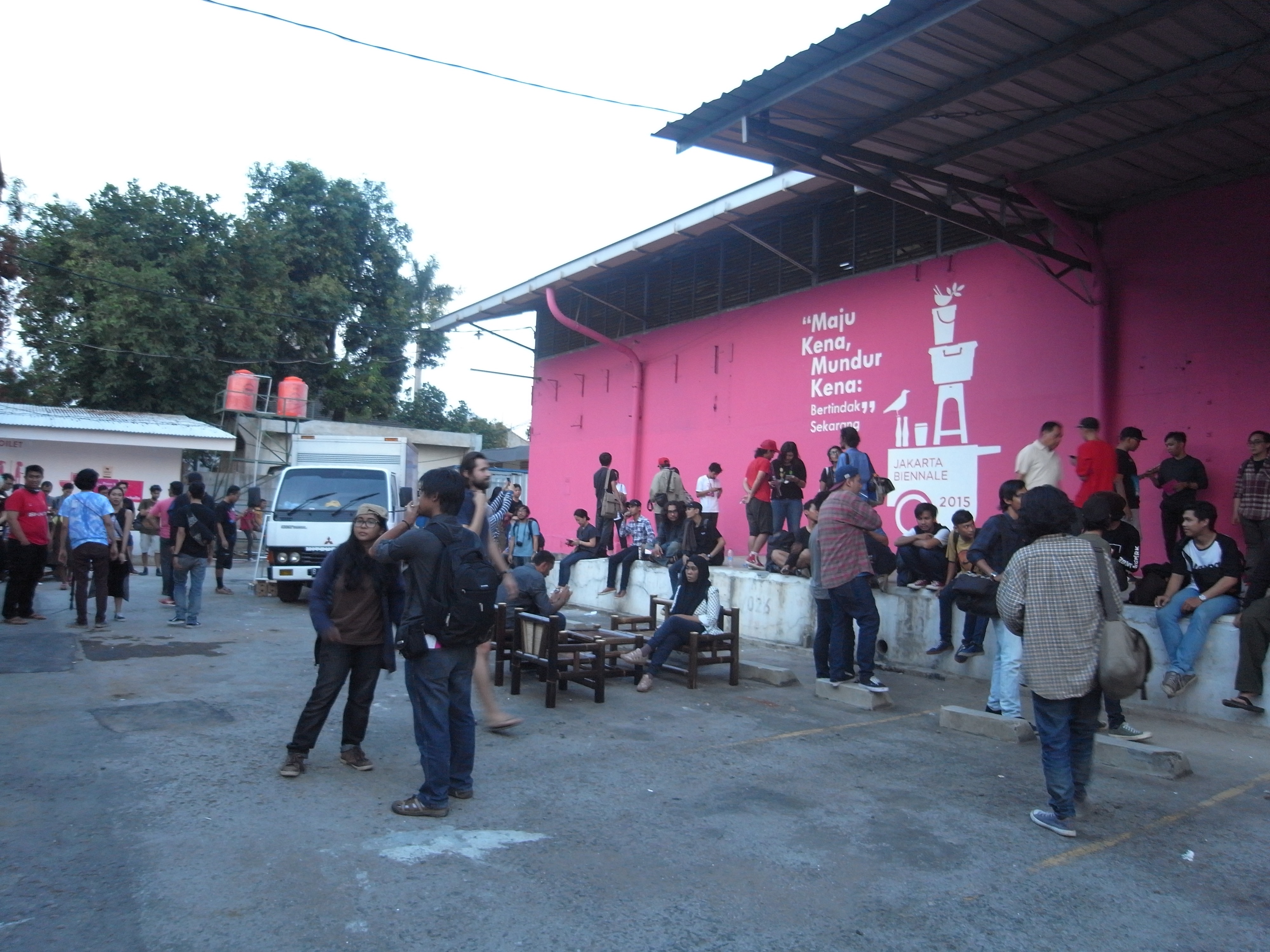
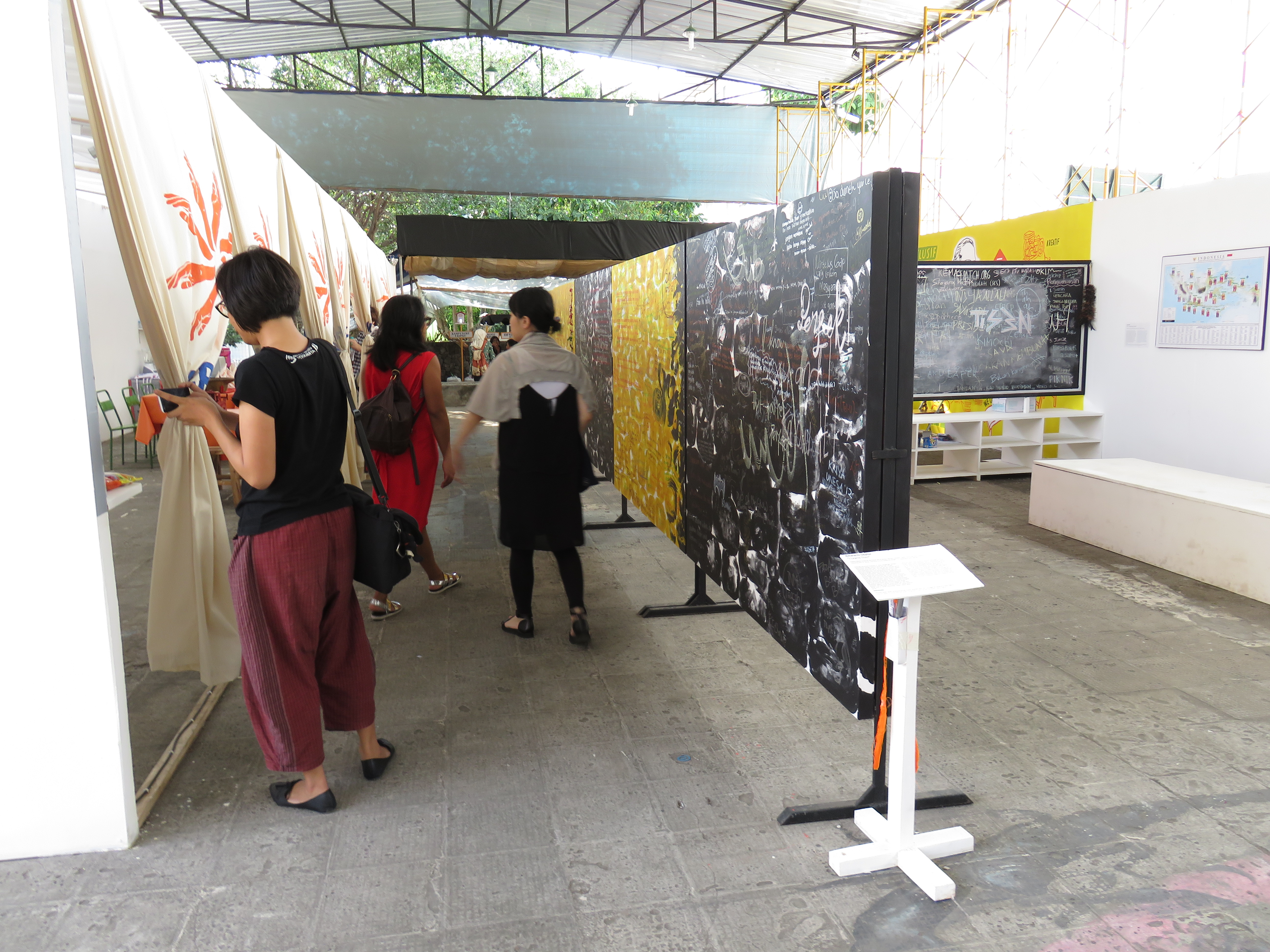
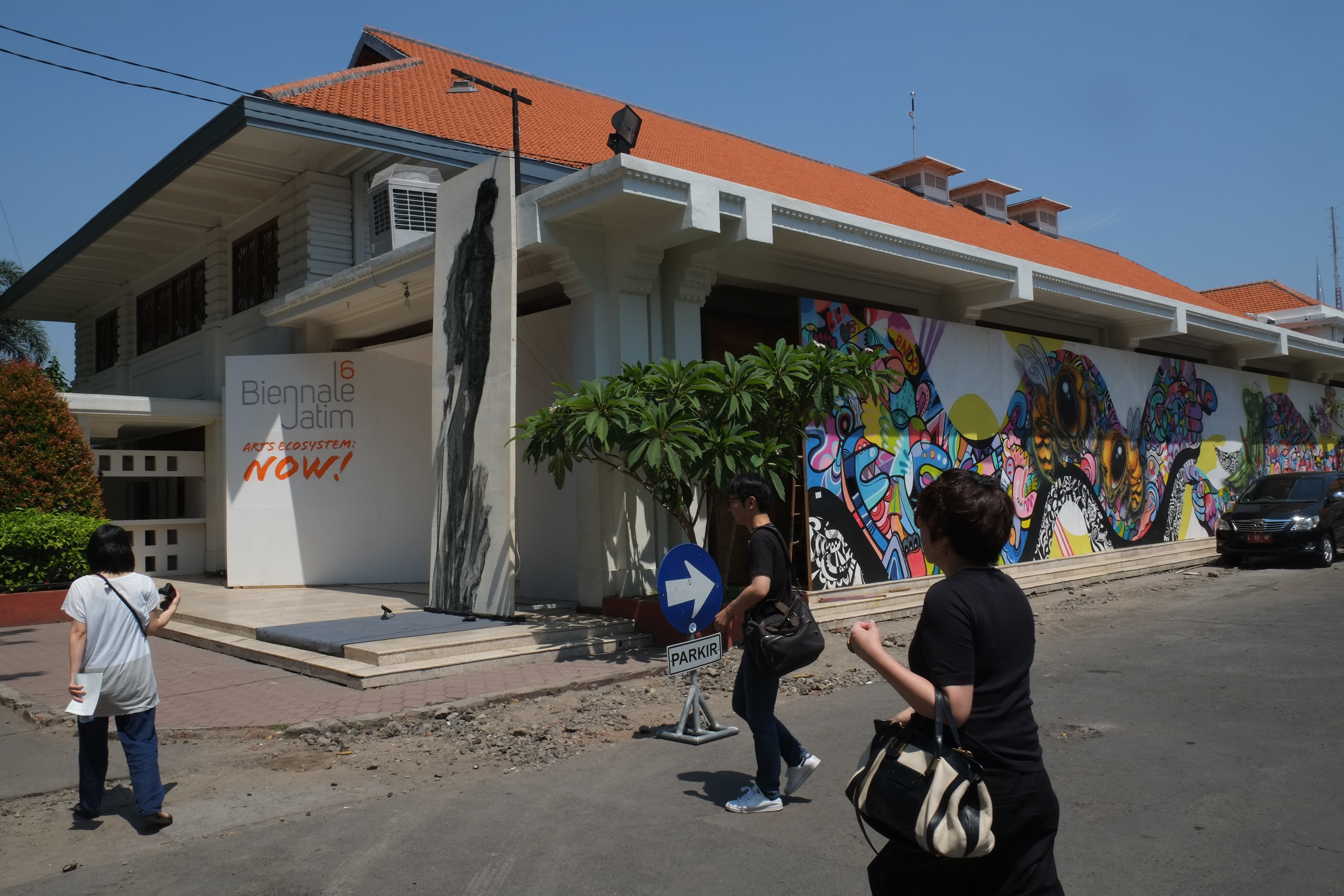
In Indonesia, the conditions of art museums and such are not as advanced as in Japan, so there are a variety of institutions supported by individual artists or sponsors, one example of which is the Cemeti Art House founded as a gallery in 1988 by Nindityo Adipurnomo (1961–) and Mella Jaarsma (1960–). These play an important role in the Yogyakarta (Jogja) art scene by providing [artist] residencies and spaces for artists to create new works. 、The Indonesia Visual Art Archive (IVAA) which became an offshoot the Cemeti Art House stores a vast collection of materials on Indonesian visual art. Although it is obviously impossible to see all the documents in such a short visit, many extremely important materials for researchers are housed there. In addition to their collection, IVAA features activities by artist groups of the younger generation, and it plays the role of providing space for them to hold exhibitions. These artist groups are more frequently called “collectives,” the representative of which is Ruangrupa based in Jakarta. Ruangrupa carries out exhibitions, events, community-oriented projects, and also partly managed the running of the Jakarta Biennale Foundation. Furthermore, Singapore’s Art Stage has also ventured into the country this year with Art Stage Jakarta 2016, proving that the art market is gradually expanding to encompass Jakarta.
That was my very brief survey of the artistic infrastructure in Indonesia. But I’d like to end by saying that there are definitely new occurrences brewing in tandem with the country’s economic growth; occurrences that I expect will further grow in the future.
Photo: Shinichiro Mikuriya
Photo Courtesy: Mori Art Museum
